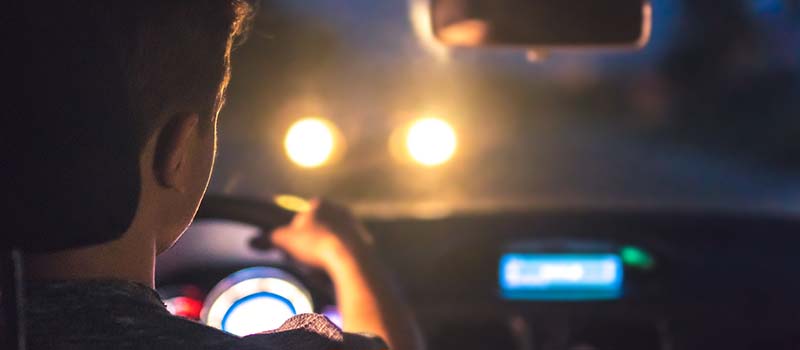Stay Safe When Driving At Night
Stay Safe When Driving At Night

Stay Safe When Driving At Night
- Don’t drive if you’re tired. Tired driving is impaired driving, and accidents that result from tired driving account for more than 50,000 crashes per year. The safest way to avoid an accident is to avoid driving at all if you’re feeling sleepy. If you’ve already started driving and start to feel fatigue, you can always use the tried and true methods of opening a window or turning up your air conditioning, as well as turning up your radio to help keep you awake. The best solution is to only drive when you are fully awake and alert, regardless of what time of day you are on the road.
- Make sure your car is prepared for driving at night. It might sound simple, but you should always check your headlights and brake lights to make sure they’re in good working order. A burned-out headlight reduces your visibility, and could even result in a ticket! Also remember to keep your windshield clean – a dirty windshield can increase the effects of glare from other cars’ headlights, making it harder for you to see during a nighttime drive.
- Use your high beams appropriately. Especially when you’re in a darker, more rural area, using your high beams can provide much-needed extra light, and even help prevent a collision with deer or other wildlife! Remember to dim your high beams when another car approaches to prevent temporarily blinding the other driver, and never use your high beams when you’re following another vehicle.
- Avoid nighttime glare. Whenever possible, try to avoid looking at oncoming headlights and avoid a fixed gaze. When an oncoming car approaches, shift your gaze down and to the right, using the right edge of the road or lane markings to help keep you in your lane. When the vehicle has passed, adjust your eyes. Reduce glare in your rearview mirror by using the day-night feature, which is the small tab on the bottom edge of your mirror.
- Maintain a safe following distance and keep an eye on your speed. At night, your reaction time may be impaired, so make sure to increase the distance between you and the cars in front of you. It may also be tempting to drive a bit faster if there’s less traffic on the road, but speeding impairs your ability to reach to whatever comes out of the dark, whether it’s an animal, stranded vehicle or other unexpected obstacle in the road.
- Watch for construction zones. Road work often occurs at night, so keep your eyes peeled as you approach construction zones. Expect to stop or slowly drive past construction workers, and stay aware in the event that workers or equipment suddenly end up on the road.
- Be a defensive driver. Even if you’re staying safe on the road, other drivers might not be. According to the AAA Foundation for Traffic Safety, the greatest number of drunk drivers are on the road between midnight and 3 a.m. Be aware of the cars around you, and watch for impaired drivers who might be engaging in risky driving behaviors.
Whether you’re an experienced or occasional nighttime driver, make sure you’re staying safe on the road with the coverage you need. If you’re unsure about whether your car insurance coverage is right for your lifestyle, reach out to your local agent. They’re happy to answer any questions and help you find the coverage that meets your needs, no matter what time of day you’re on the road.
